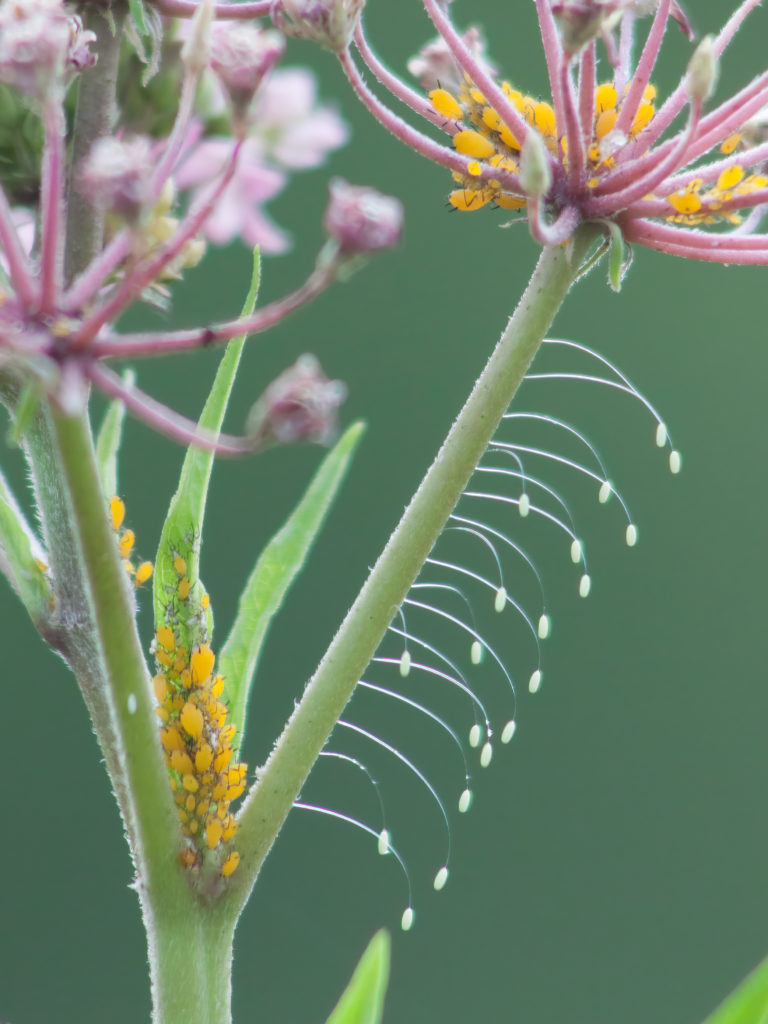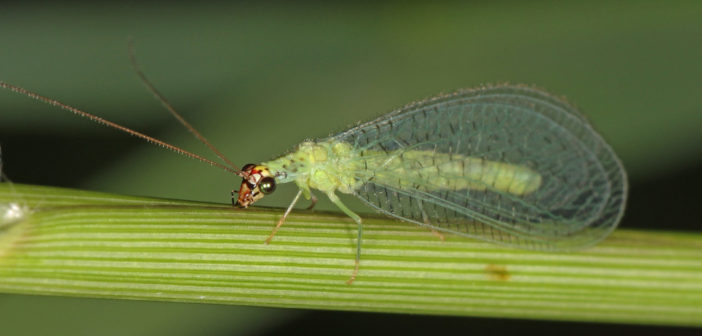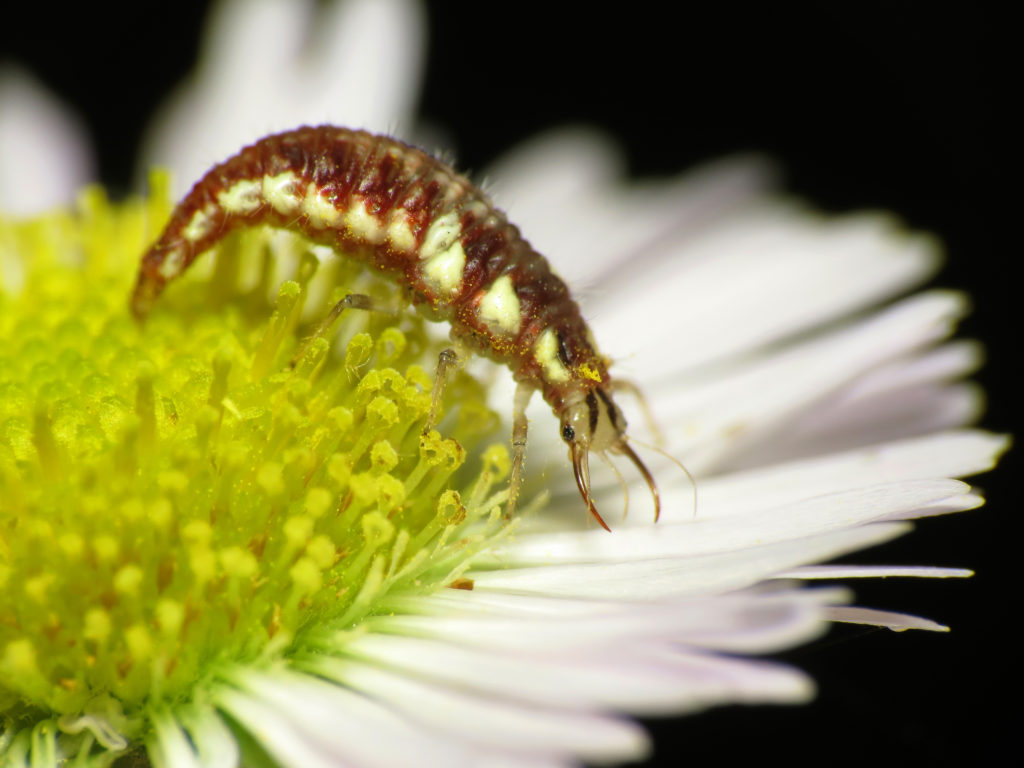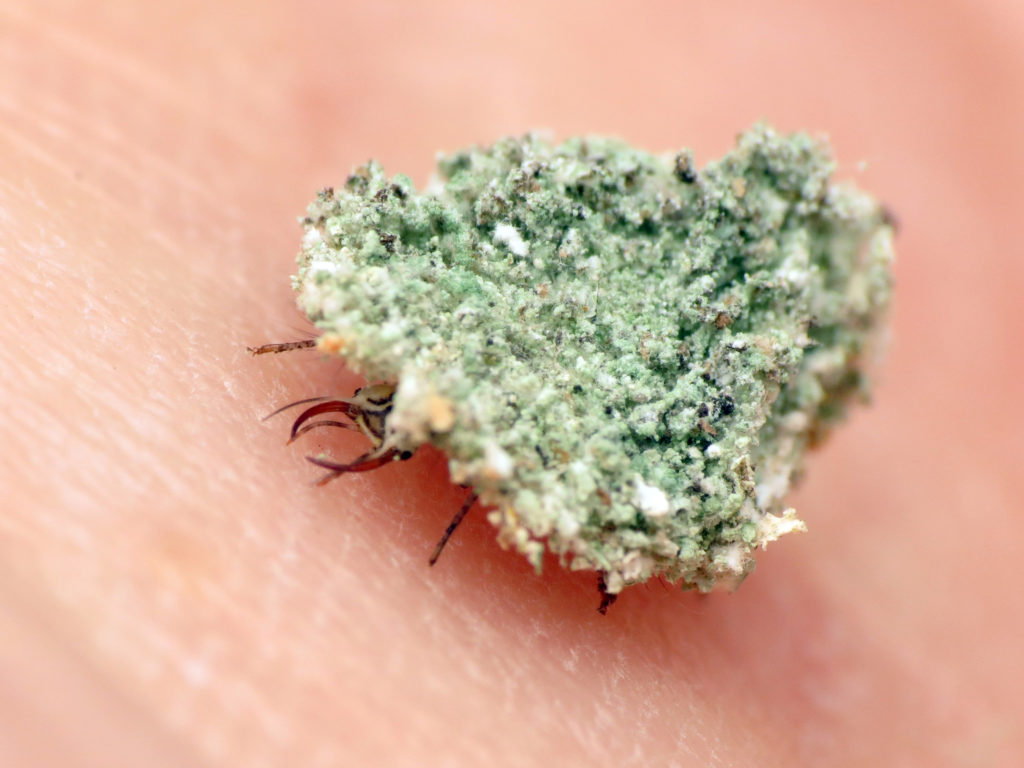Have you noticed these long, slender insects at night, probably clinging to your house near your porch light? They’re adult green lacewings (order Neuroptera, family Chrysopidae), delicate, harmless eaters of pollen and nectar, and common North American and Europe insects.
A special thing about them is their mating calls. You’ve heard them singing, even if you can’t put a name to them. For older generations, their songs probably evoke memories of being outdoors on peaceful summer evenings. In the daytime, they typically rest on the underside of leaves. Green lacewings are found wherever there’s habitat that will provide food for their offspring.
Green lacewings are believed to have evolved around 200 million years ago during the Jurassic period from an ancestor they had in common with brown lacewings and antlions. There are between 1,200 and 2,000 species (depending on the source). Adults range in size from 0.3 to 1.0 inch (8–25 mm) long and are usually bright green to greenish-brown. Some have noticeable golden eyes.
Their larvae are sometimes called “aphid lions” because they’re important predators of aphids. However, they don’t limit their food source to only that; they’ll feed on any insect they encounter. They’re voracious, and some farmers buy their eggs for biological pest control.
But they’re also prey themselves. They’ve developed an interesting strategy when it comes to bats: when they hear them echolocating in search of insects, they hide from them by closing their wings and dropping to the ground, literally “lying low.”
Chrysopidae

Green lacewing eggs (Chrysoperla rufilabris) laid near aphids (Douglas Mills/Flickr; CC BY-NC-ND 2.0)
The lacewings lay tight clusters of eggs on stalks only 0.3 inches (8.4 mm) long, typically on the underside of a leaf on a plant with aphids. That way, when they hatch, the larvae have a ready food supply. Some lacewings lay eggs singly rather than in a batch. Each egg is the size of a pinhead, and the stalks are hair-thin and made of silk. When the eggs darken, they’re ready to hatch. There are several generations a year, and the last generation generally hibernates in debris or leaves as either pupae or adults.
Send a mental salute when you see one— it’s helping to control aphids, mealybugs, and other pest insects on your plants.
The larvae of some lacewing species keep themselves safe from birds by collecting debris on their bodies. So if you see a tiny, messy mass of lint, sand, dirt, or other stuff purposefully moving about on a leaf, you’re watching a prowling larva in camouflage gear.
America’s biggest, boldest butterflies
In your yard: fireflies









